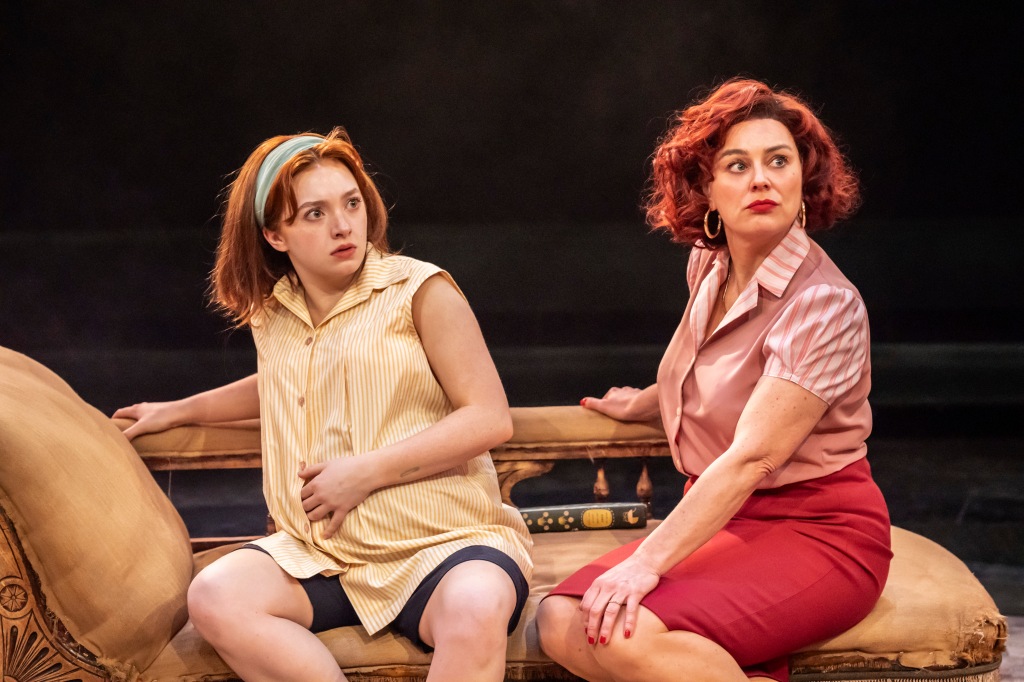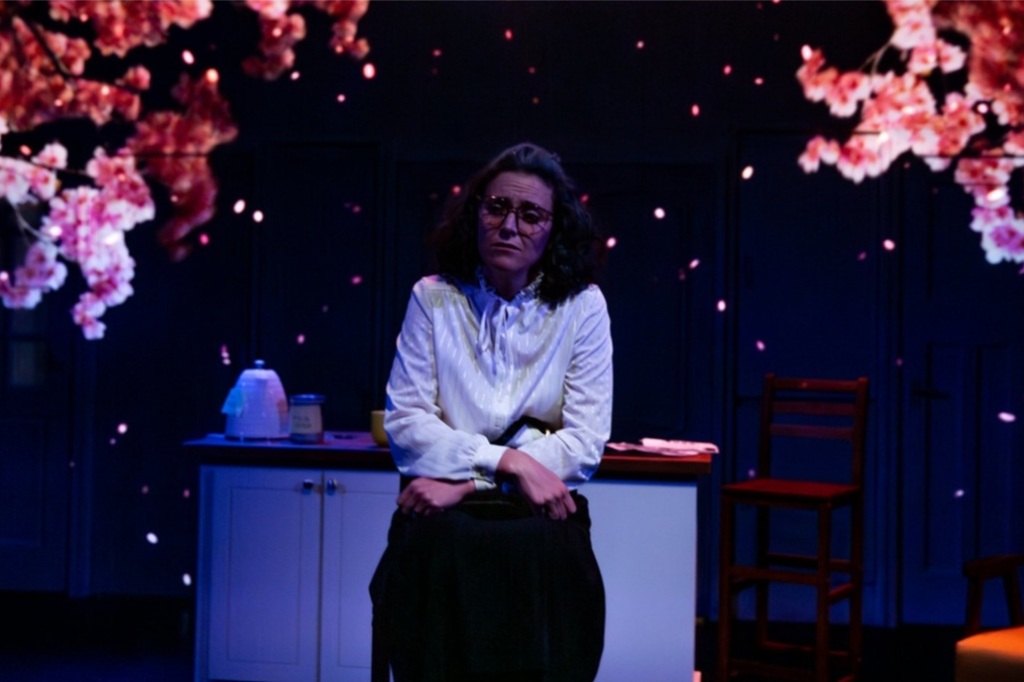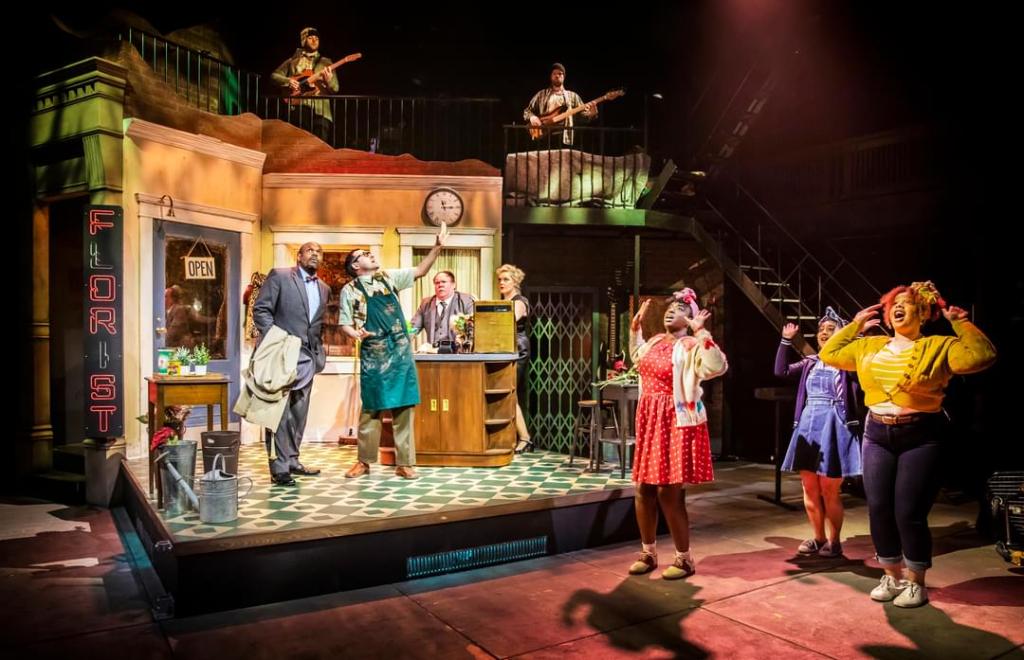★★★★☆
When A Taste of Honey premiered in 1958, it was groundbreaking. Decades later, it’s still being performed. But how relevant is it to today – and after hundreds of productions, what does this new one have to add?
One of the most iconic plays in British history, A Taste of Honey was written by a 19-year-old Shelagh Delaney FRSL, who set it in her native Salford.
Originally intended as a novel, Delaney turned it into a play because she hoped to revitalise British theatre and address social issues that she thought were not being presented. Indeed, the play is an early example of “kitchen sink realism”, a British cultural movement that developed in the late 1950s and early 1960s. It used a style of social realism which depicted the domestic situations of working-class Britons. It protagonists usually could be described as “angry young men” (or in this case, a woman), who were disillusioned with modern society. It succeeded the superficial “well-made plays” of the previous decade.
A Taste of Honey was groundbreaking, especially because of its bold exploration of sociopolitical issues and its transgressive female characters.
The central character is a moody teenager, Josephine “Jo” (rising star Rowan Robinson – and you can see why), who moves into a lowly, one-bedroom flat with her insufferable mother, Helen (Olivier Award winner Jill Halfpenny – excellent as ever), who admits to being a useless mother – but whilst admitting to your flaws is commendable, Helen has no desire to fix them.
A “tart”, Helen has had a series of love affairs, with Jo having never met her father, and she often moves around to get away from men she wants to escape, including the rich, sleazy Peter, who soon finds her. Peter is written archetypically so directors must keep him from becoming a caricature. Andrew Sheridan revels in the revolting role but I would like to see some more nuance in the performance.
Jo, meanwhile, gets pregnant with the child of Jimmy, a Black sailor (Obadiah, a dazzling drama graduate in a criminally underwritten role – though certainly a consequential one).
When Helen moves in with Peter, Jo invites her gay friend, Geoffrey (Olivier nominee David Moorst), to live with (and care for) her. Moorst is marvellous as the amazingly audacious, adorably awkward, and arguably autistic gay best friend.
One can certainly appreciate how radical this all was back in 1958. This was before Black Americans had even achieved equal rights – and whilst the UK did not have such discriminatory laws, hostility towards people of colour was rife and continued to be for decades (my parents have told me about how difficult it was growing up brown in the 70s and 80s).
But in the 2020s, none of these themes and issues feel radical – at all. Not homosexuality, not women sleeping around, not teen pregnancy, not pregnancy outside of wedlock, and certainly not interracial relationships. Today, the stakes do not feel all that high. Further, the end of Act 1 does not get the audience excited for Act 2.
Thus, this bold writing is nowhere near as impactful now as it was decades gone by – so new productions must think of new ways to make the old play feel relevant, and the creatives must be able to answer, “Why, and why now?”
Emma Baggott’s direction is fantastic. The entire play takes place in one setting (it takes “kitchen sink” quite literally) so it can easily become tiresome. Performing this play in-the-round is no easy feat but Baggott uses it to her advantage, creating a feeling of claustrophobia, especially with Peter Butler’s (designer) flooring, consisting of circles within circles, reflecting the circular shape of the theatre. The story is both thematically and visually microcosmic for wider society.
Butler’s set and costume design is period-appropriate and beautiful – he surely had fun with Helen’s glamorous wardrobe. He literally, and brilliantly, adds colour to the dull lives of the characters. His Act 2 opening design is gorgeous.
The stage sits below metal beams resembling cranes that allude to the industrial site – which lower and compress, trapping the characters; they will never escape this life, which appears to be commentary on the limitations of class mobility. The beams are coated with carnival bulbs, possibly representing hopes and dreams which will inevitably die. Grates on the floor occasionally blow smoke. It’s all very atmospheric.
Simisola Majekodunmi captures various themes and feelings with her lovely lighting. The stage is lit dimly and intimately, like the warm, weak lighting seen in many houses.
George Dennis’ sound design is excellent – with noises continuously coming from outside. For those of you unaware, the Royal Exchange Theatre’s auditorium is a structure that sits inside the old exchange building – and the noises appeared to be coming from outside the auditorium. This made the audience feel involved in the action, heightening the claustrophobia and intensity.
Baggott, with the powerful delivery of the cast, emphasises the humour, much of it being no less funny today than it was back then. Some of Delaney’s best one-liners are hurled towards Jo, from Helen’s “You look like a ghost warmed up,” to Peter’s “Look at her face – she looks like an unrestored oil painting.”
The most bold aspect of this production, however, is a new character created by Baggott: “Jazz Singer”, who operates on the periphery of the play (literally), watching the action unfold and occasionally swanning onstage and singing songs by various Mancunian and Salfordian artists over the years, capturing the importance of music in the play (and Greater Manchester).
It is not until the intense final scene that she finally becomes involved in the action. She is not a character in the story so much as she is representative of something else – but what? We could debate this for ages…
The Jazz Singer is poetically played by Nishla Smith, a literal jazz singer and composer – and actress, who won a UK Theatre Award for her role in Arti Banerjeree’s production of Kes, which premiered in Greater Manchester.
The production’s main song is ‘Dirty Old Town’, which was written about Salford by native Ewan MacColl, an artist and labor activist – but made popular by The Dubliners and The Pogues (the latter of whom would later work with MacColl’s London-born daughter, Kirsty, on ‘Fairytale of New York’). Smith’s rendition is simultaneously soothing and haunting – but that’s Salford, innit?
The songs break up the action – which is needed, what with it all being set in one location – but, consequently, extends the run time to a whopping 2 hours and 50 minutes. By the end, it begins to drag – so Baggott is wise to end the play so passionately.
Another memorable scene is the colourful, musical opening of the second act – but as dazzling as it is, we soon return to the dull reality (though this contrast is quite clever). The Royal Exchange did something similar with Brief Encounter, a more traditional play-with-music, whose Act 2 opener was visually delightful – and a depart from the rest of the piece.
So, is the play still relevant? Of course. But I do hope that the industry eventually moves past constant revivals of classics and looks to lesser-known plays from times gone by as well as new writing.
As Tanika Gupta MBE FRSL said bluntly at the Great Expectations panel discussion, theatres prefer to revive much-loved, well-known plays because they are guaranteed ticket-sellers – though the Royal Exchange also spotlight lesser-known and new plays – but the way around this is to reimagine them (she located Great Expectations in late 1800s and early 1900s India).
Baggott breathes life into this play, which is so old it could be my grandmother, allowing it to live on over a decade after the passing of its author.
A Taste of Honey runs at the Royal Exchange Theatre until April 13.



